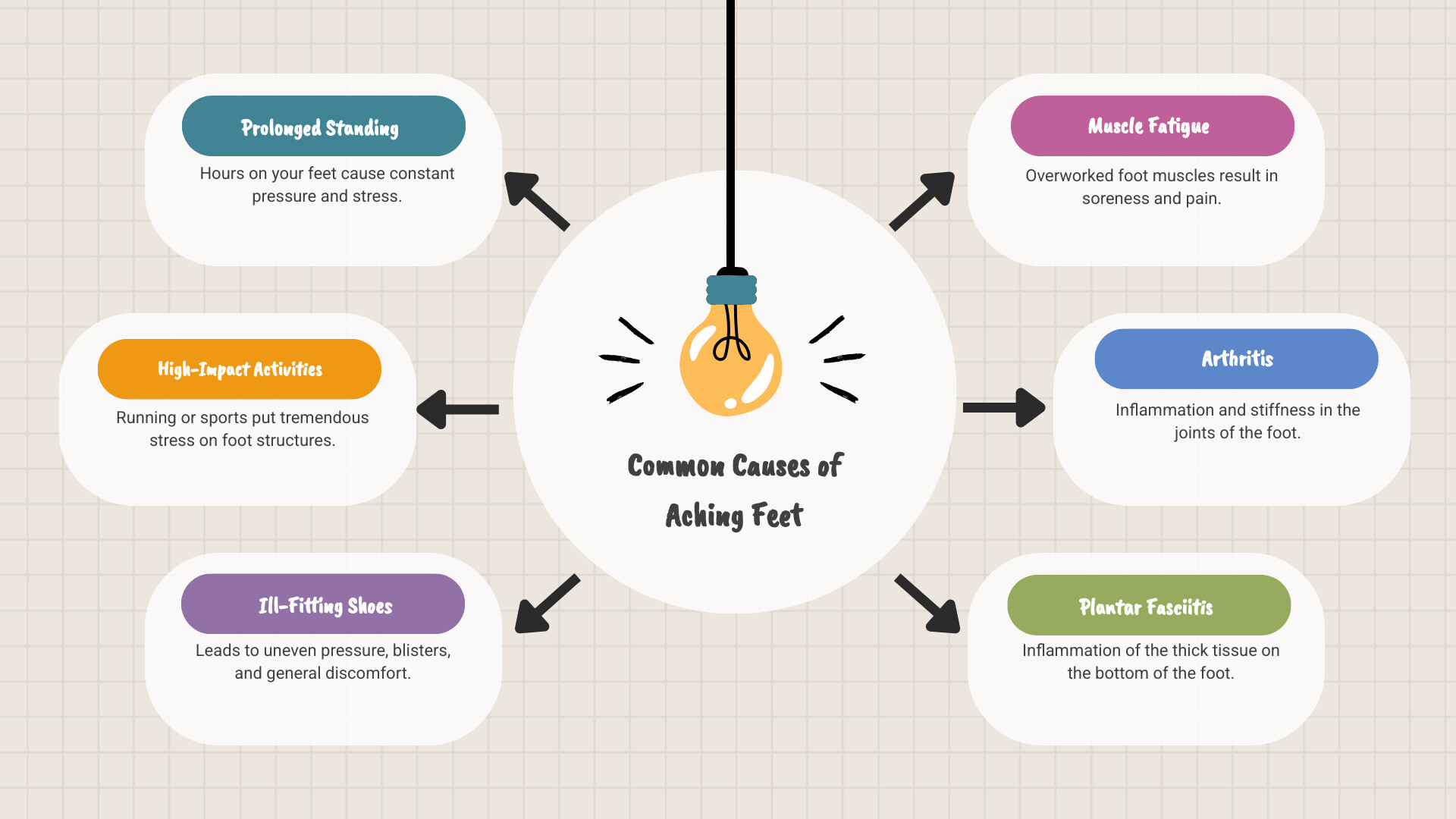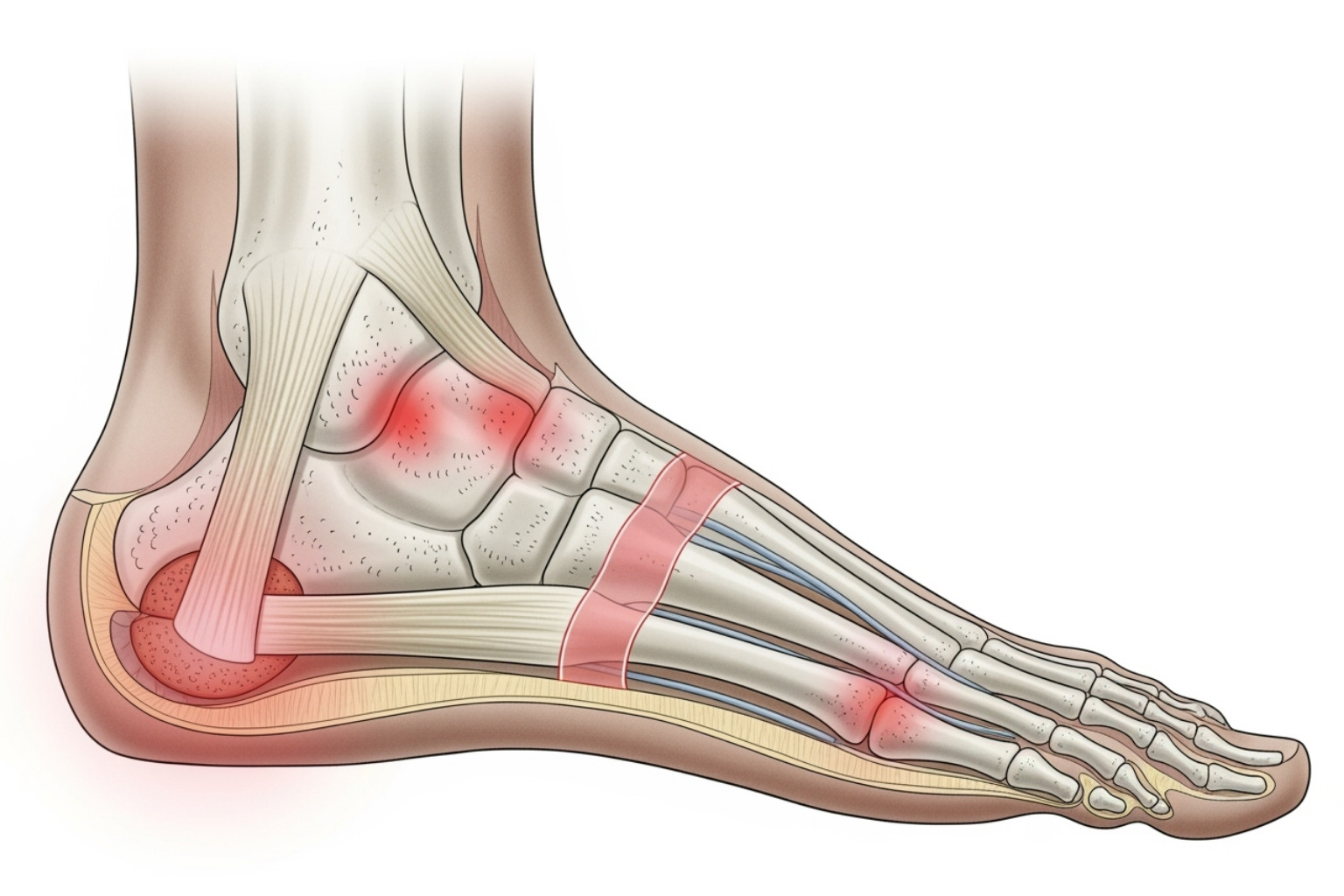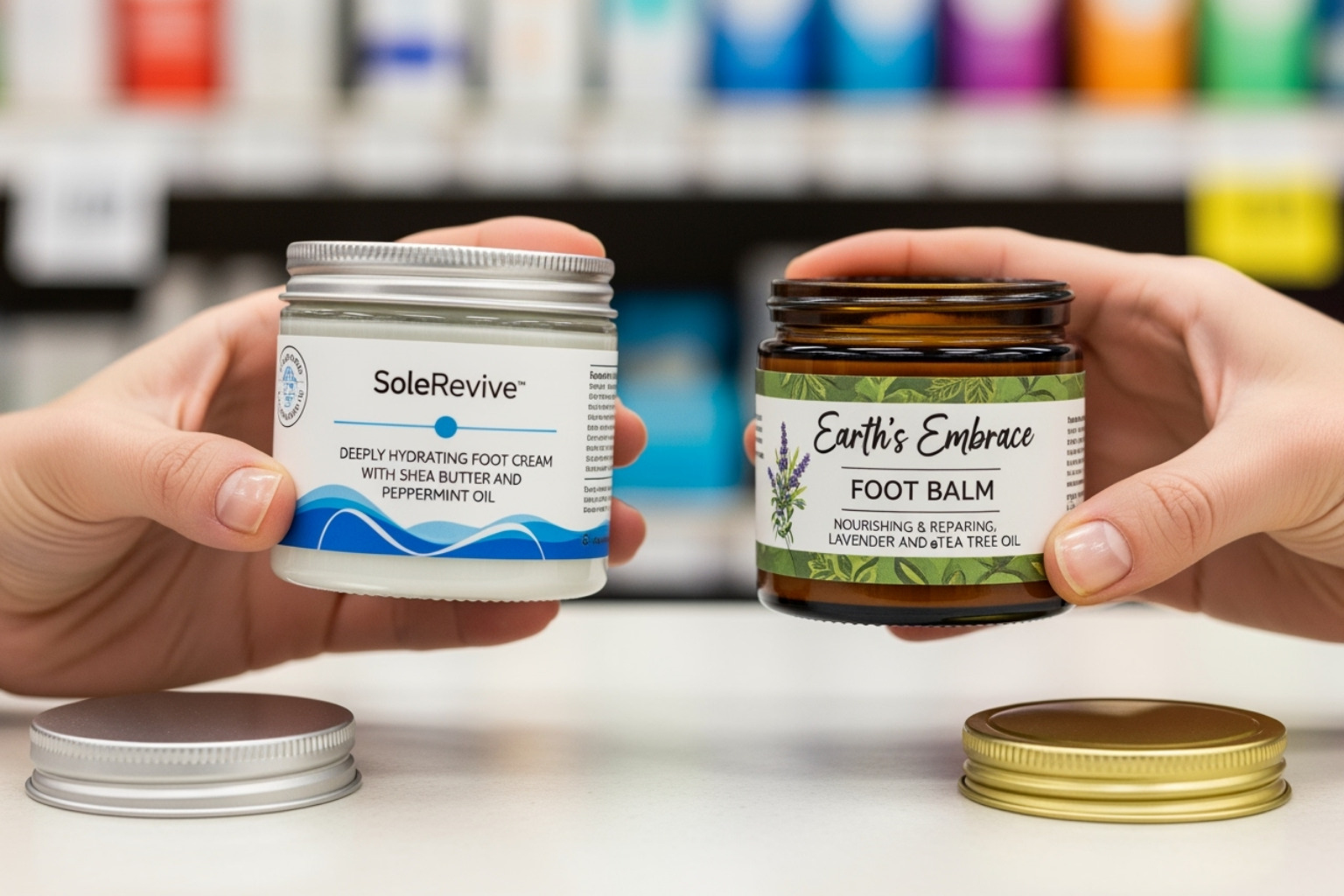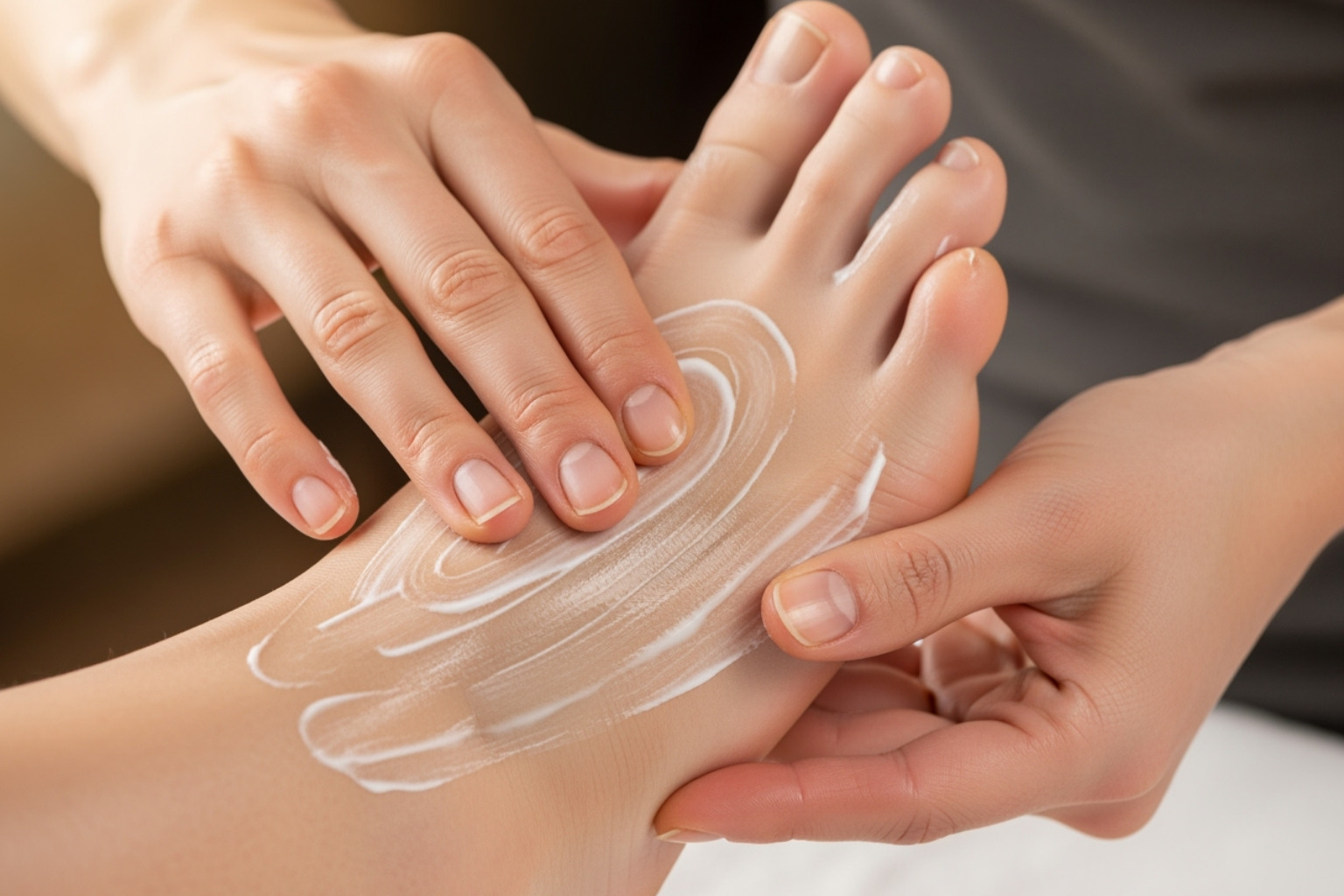Why Foot Cream for Aching Feet Is Your First Step to Relief
Foot cream for aching feet can provide fast, targeted relief when your feet are screaming for help after a tough workout or long day. Whether you're dealing with burning sensations, muscle fatigue, or soreness, the right topical solution can get you back in action quickly.
Quick Relief Guide:
- Lidocaine-based creams - Provide numbing relief within minutes (4% strength available without prescription)
- Natural anti-inflammatory creams - Use arnica, frankincense, or turmeric for muscle soreness
- Cooling formulas - Peppermint and menthol deliver instant soothing sensations
- Dual-action creams - Combine pain relief with deep moisturization for dry, cracked feet
- Apply 2-4 times daily - Clean feet first, massage thoroughly, let absorb completely
Your feet take a beating from high-impact training and long hours of standing. As one healthcare worker shared: "My feet were in bad shape... after 2-3 uses, I noticed a huge difference."
You don't have to live with daily discomfort. Modern foot creams pack powerful ingredients that target pain at its source while nourishing your skin. Some formulas work so fast that most users experience pain relief within minutes of application.
But not all foot creams are created equal. The best ones combine multiple approaches: numbing agents like lidocaine for immediate relief, natural anti-inflammatories for deeper healing, and moisturizers to repair damaged skin.

Understanding the Source: Common Causes of Aching Feet
Before reaching for a foot cream for aching feet, it's helpful to understand what's causing your discomfort. Knowing the "why" behind your pain helps you choose the right treatment.
Daily life can be tough on your feet. If you spend hours on your feet as a nurse, teacher, or retail worker, you know what prolonged standing feels like. Your muscles get tired, blood pools, and everything aches.
Athletes face a different challenge. High-impact activities like running or basketball put tremendous stress on the feet. During a run, your feet absorb shock equivalent to several times your body weight with each step, leading to soreness.
Then there are ill-fitting shoes. They create pressure points and force your feet into unnatural positions, resulting in muscle fatigue, blisters, and misery.
But sometimes the problem runs deeper. Several medical conditions can turn your daily walk into a painful ordeal:
Heel pain often strikes first thing in the morning. This sharp, stabbing sensation usually points to plantar fasciitis or heel spurs.
Arthritis can settle into the 33 joints in each foot, causing stiffness, swelling, and deep, aching pain. Some find relief with creams containing ingredients like frankincense, which targets inflammatory pain.
Neuropathy causes burning, tingling, or shooting pains from nerve damage. It's common in people with diabetes and requires targeted treatment to soothe aggravated nerves.
What is plantar fasciitis? It's inflammation of the tissue band along your foot's bottom. This condition causes a huge portion of heel pain complaints and makes every step a painful reminder.
While a good foot cream for aching feet provides relief for many issues, persistent or severe pain deserves professional attention. Your feet carry you through life—they're worth taking care of.

The Science of Soothing: Key Ingredients in a Foot Cream for Aching Feet
When shopping for a foot cream for aching feet, you want ingredients that actually work to penetrate your skin and tackle the root causes of pain.
The best foot creams combine analgesics (pain relievers), anti-inflammatories, moisturizers, and cooling agents for complete relief. It's no wonder that The best foot creams according to ballerinas are often dual-action formulas, as ballerinas put their feet through serious stress.
Let's break down what these powerhouse ingredients actually do for your aching feet.
Numbing and Blocking Pain Signals
Sometimes you need ingredients that stop pain signals in their tracks, which is where numbing agents come in.
Lidocaine is a star player. This topical analgesic acts like a local anesthetic, blocking pain signals before they reach your brain. Its popularity comes from the fast-acting relief it provides. Research shows that 4% Lidocaine is available without a prescription and delivers powerful pain relief that most people feel within minutes.
This is especially helpful for aggravated nerves from conditions like neuropathy. Many popular creams have built their reputation on this quick-acting approach.
Natural Anti-Inflammatories and Soothers
Inflammation is often the hidden culprit behind foot pain from conditions like arthritis or plantar fasciitis. Fortunately, nature provides incredible anti-inflammatory ingredients.
Arnica has been used for centuries to reduce bruising and muscle soreness. This extract is effective for joint pain and muscle aches. Many creams combine it with other natural ingredients like MSM and Boswellia for improved comfort.
Frankincense and Myrrh are modern pain-fighting champions. Frankincense is noted for arthritis pain relief, and the combination of both offers intensive therapy that's helpful for diabetic nerve pain.
Turmeric offers its famous anti-inflammatory properties, while Boswellia (Indian frankincense) adds another layer of inflammation-fighting power. They work together to address the root causes of discomfort.
For more insights on how these natural ingredients help with broader muscle pain issues, check out our guide on Best Products for Muscle Pain.
Cooling and Invigorating Sensations
After a long day, tired feet often need a refreshing wake-up call. Cooling agents provide an instant soothing moment while distracting from pain.
Peppermint oil delivers an invigorating feel. This essential oil helps stimulate circulation and provides genuine relief.
Menthol improves the cooling sensation. Found in peppermint, it creates a strong cooling effect that can temporarily ease pain and itchiness. Eucalyptus adds its distinctive scent and muscle-soothing properties.
The beauty of these cooling ingredients is that they work immediately. You'll feel that refreshing sensation the moment you apply the cream, giving you instant feedback that something good is happening.
Hydration and Skin Repair
Dry, cracked feet can make pain worse because damaged skin offers less protection. That's why the best foot cream for aching feet also heals and protects your skin.
Shea Butter provides intense moisture for parched skin, helping to heal damage. Many dancers prefer shea butter creams because they absorb well without leaving feet slippery.
Allantoin works as a skin protectant that promotes cell regeneration. It's particularly effective at healing irritated, cracked skin. You'll find it in many popular foot repair creams, where it works to repair damage.
Jojoba Oil mimics your skin's natural oils, providing excellent moisturization without a greasy feeling. Urea helps by drawing moisture into your skin and breaking down thick, rough patches.
When these ingredients work together, you get pain relief, reduced inflammation, refreshing sensations, and healthier skin—all from one application of the right foot cream for aching feet.
Choosing Your Champion: Finding the Right Foot Cream for You
Let's be honest - choosing the perfect foot cream for aching feet can feel overwhelming. Walk down any pharmacy aisle and you'll find dozens of options, each promising miraculous relief. The secret is knowing what to look for and understanding that what works wonderfully for your neighbor might not be your perfect match.

Your personal needs should drive your decision. Whether you have sharp nerve pain, chronic arthritis aches, or just tired, sore feet, each situation calls for different ingredients.
Customer reviews and star ratings are your best friends. Look for products with many positive reviews and high ratings. Real users share honest experiences, like the healthcare worker who saw noticeable improvement after just 2-3 uses. A product with thousands of positive reviews is a strong signal that it delivers results.
Creams vs. Gels vs. Balms: What's the Difference?
The texture of your foot cream for aching feet affects how it works and the benefits you'll get.
Creams are a balanced option, offering excellent hydration while delivering pain-relieving ingredients effectively. A good cream is often described as "super thick but absorbs well"—the perfect balance.
Gels are your go-to for quick absorption and cooling relief. They're lighter, water-based, and won't leave your feet feeling greasy. If you're active or need to put shoes on quickly after application, gels are fantastic. They're particularly effective for muscle pain relief, as explored in our guide on Gel Muscle Pain Relief.
Balms are the heavy-duty option for intensive repair. They're thicker and create a protective barrier that locks in moisture. If you have severely cracked heels, balms are worth the slower absorption for their long-lasting relief.
| Type | Texture | Absorption Speed | Primary Benefits |
|---|---|---|---|
| Creams | Thicker, richer | Moderate | Deep hydration, comprehensive pain relief, often dual-action (moisture + pain) |
| Gels | Lighter, non-greasy | Fast | Quick absorption, cooling sensation, good for muscle pain, less residue |
| Balms | Waxy, concentrated | Slow | Intensive repair, protective barrier, long-lasting moisture, targeted relief for severe dryness |
The Best foot cream for aching feet and Specific Conditions
Here's where things get really personal. Your specific condition should be your primary guide when choosing a foot cream for aching feet.
Diabetic foot pain requires extra care. Look for products labeled "Diabetic Foot Cream" with gentle, non-irritating formulas. These creams should address both pain relief and intense moisturization to prevent skin breakdown. For example, some creams specifically target the burning, tingling, and shooting sensations common with diabetic neuropathy. Always check with your healthcare provider before trying new products if you have diabetes.
Neuropathy responds well to creams containing lidocaine for their numbing effects. The 4% lidocaine formulations can provide significant relief from nerve-related burning and tingling. Some natural options include frankincense and myrrh, which are used in creams targeting diabetic nerve pain and even restless leg syndrome.
Plantar fasciitis involves inflammation and sharp heel pain. Anti-inflammatory ingredients like arnica, turmeric, or MSM can be incredibly helpful. While creams provide symptomatic relief, combining them with proper footwear makes a huge difference. Check out our article on Plantar Fasciitis Shoes for comprehensive care.
Arthritis in the feet benefits from creams with arnica and frankincense. Creams formulated for joint pain can provide significant relief from stiffness and inflammation.
Restless Leg Syndrome sufferers often find relief with creams containing frankincense and myrrh, which provide soothing comfort that extends beyond just foot pain.
Natural & Organic Options: Are They Better?
The appeal of natural and organic foot cream for aching feet goes beyond just being trendy—there are real benefits to consider.
Fewer synthetic chemicals mean less risk of irritation for sensitive skin. Natural formulas often skip parabens, phthalates, and synthetic fragrances.
Essential oils are stars of natural pain relief. Peppermint provides cooling relief, while lavender offers calming aromatherapy benefits. Users often praise lavender-infused creams for their relaxing scent and feel.
Plant-based ingredients like arnica, chamomile, and St. John's wort bring centuries of traditional healing wisdom to modern formulations. Natural moisturizers like coconut oil and shea butter provide excellent hydration without synthetic additives.
Therapeutic benefits extend beyond pain relief. Many users find the aromatherapy effects genuinely relaxing and mood-lifting after stressful days.
Toxic-free formulations appeal to health-conscious consumers. Many companies emphasize using quality-grade essential oils and herbs, creating natural alternatives to some over-the-counter products.
"Natural" doesn't automatically mean "better for everyone." Always check ingredient lists for allergies. Some of the most effective pain relievers, like lidocaine, are synthetic. The best choice is one that works safely and effectively for you.
Maximizing Relief: Application Techniques and Complementary Therapies
Getting the most from your foot cream for aching feet is about using it correctly as part of a larger care plan. Proper application is a daily moment of care that can make a huge difference.

How to Apply Your Foot Cream for Aching Feet
The secret to maximum relief is treating the application like a mini spa session. Your feet deserve this attention after carrying you all day.
Start with clean, dry feet to help active ingredients penetrate your skin. Use enough cream to cover the affected areas generously for a proper massage.
Now comes the therapeutic part: the massage technique. Use gentle but firm pressure, focusing on your arches and heels, which take the biggest beating. Use your thumbs for small circular motions along the arch and spend extra time on the heel. Don't forget your toes, the spaces between them, and your ankles if needed.
For best results, apply your cream 2-4 times daily as recommended, often every 6-8 hours for consistent relief. Let the cream absorb fully before putting on socks or shoes to ensure you get the full benefit.
Applying cream after a warm bath or shower works well, as the skin is more receptive. One user shared they always apply it "after bathing, showering, or a relaxing foot soak for maximum benefit."
Pairing Creams with Other Pain Relief Methods
A foot cream for aching feet is powerful, but it's even better when combined with other caring practices. Think of it as building a support team for your feet.
Foot soaks with Epsom salts create the perfect foundation. The warm water relaxes tired muscles while the magnesium-rich Epsom salts help reduce swelling. Professional dancers often start their foot care routine with ice water and Epsom salt soaks.
Stretching and targeted exercises address the root causes of many foot problems. Simple calf stretches and foot flexes can improve circulation and flexibility. For specific conditions, dedicated Exercises for Plantar Fasciitis can provide long-term relief.
Don't underestimate the power of proper footwear and orthotics. The best foot cream can't undo the damage from ill-fitting shoes. Shoe inserts can correct issues that contribute to pain, while supportive, cushioned shoes prevent problems before they start.
Massage tools like foot rollers or tennis balls can help work out stubborn knots between cream applications. The combination of mechanical pressure and the healing ingredients in your cream creates a one-two punch against discomfort.
By weaving your foot cream for aching feet into a broader approach, you're investing in long-term comfort and mobility. Your feet will thank you.
Frequently Asked Questions about Foot Pain Relief Creams
When dealing with aching feet, you'll have questions about your foot cream for aching feet. We've gathered common concerns and safety information to help set realistic expectations.
How quickly can I expect to feel relief?
The timeline for relief depends on the ingredients in your foot cream for aching feet, as they work at different speeds.
Lidocaine-based creams are the fastest for pain relief. These topical analgesics block nerve signals quickly, and most users feel a numbing sensation within minutes of application.
Natural ingredients like arnica, peppermint, and menthol work differently. You might feel their cooling or anti-inflammatory effects within 15-30 minutes as they reduce inflammation or create a soothing sensation.
Consistent use is key. While the first application may offer quick relief, the real magic happens over time. For chronic conditions, regular application over several days or weeks yields the best long-term results.
Are there any precautions or side effects to consider?
Safety first! While foot cream for aching feet is generally safe when used properly, there are important considerations.
If you have diabetes, your feet need special care. Always consult your healthcare provider before trying any new foot care product, even those marketed as "diabetic-safe." Your doctor can guide you safely. It's always wise to consult a professional before starting a new foot care regimen if you have diabetes.
Sensitive skin can react to certain ingredients. Before applying cream all over, do a patch test on a small area and wait 24 hours to check for irritation.
Never apply pain relief creams to broken skin, cuts, or open wounds unless your doctor specifically tells you to. This can lead to irritation or unexpected absorption.
Pregnancy and nursing require extra caution. Many products recommend asking a health professional before use during these times. It's always better to be safe.
Watch out for interactions with other medications. If you're using other topical treatments, check with your doctor before adding another product.
Red flag symptoms include severe burning, swelling, blistering, or pain that gets worse. If symptoms persist for more than 7 days or you experience these signs, stop using the product and seek medical advice.
Can I use a heating pad with a pain relief cream?
This is a great question, and the answer is usually no—but it's important to understand why.
Many topical pain relief creams, especially those with lidocaine or menthol, can have dangerous interactions with heat. The combination can increase skin absorption to unsafe levels or cause chemical burns.
Always check the drug facts label and product instructions. Many products explicitly warn against using a heating pad or ice pack while using the cream. This isn't overcautious labeling—it's for your protection.
If you want both heat therapy and topical pain relief, use them at separate times. Apply your cream, let it absorb, and use heat therapy later, or vice versa. This allows you to enjoy the benefits of both without the risks.
The bottom line? Follow product instructions religiously. When combining treatments, it's always better to err on the side of caution.
Conclusion: Step Into a Pain-Free Life
Your feet have carried you through countless miles and deserve better than to ache daily. The good news is that a foot cream for aching feet offers a simple, effective path to comfort.
Throughout this guide, we've seen how the right cream can transform your routine. Whether you need the immediate numbing power of lidocaine, the gentle healing of natural ingredients like arnica and frankincense, or the refreshing coolness of peppermint and menthol, there's a solution for your needs.
Diabetic nerve pain calls for specialized formulations. Plantar fasciitis responds well to anti-inflammatory ingredients. General muscle fatigue benefits from dual-action creams that both soothe and moisturize.
What really makes the difference is taking a complete approach to foot health. The most effective relief combines topical treatments with proper application, supportive footwear, gentle stretches, and therapeutic soaks. This holistic strategy puts you in control.
You don't have to accept foot pain as part of life. Every step can feel better with targeted care. Small changes in your routine can lead to significant improvements.
Ready to experience what targeted nerve pain relief can do for you? Explore Neuropasil Nerve Pain Relief Cream for targeted comfort and find how specialized formulations can help you step confidently into pain-free days.
For more comprehensive insights into managing muscle and nerve discomfort, check out The Ins and Outs of Best Pain Relief Creams for Muscle Pain.
Your feet have been there for you through everything. Now it's time to be there for them.














